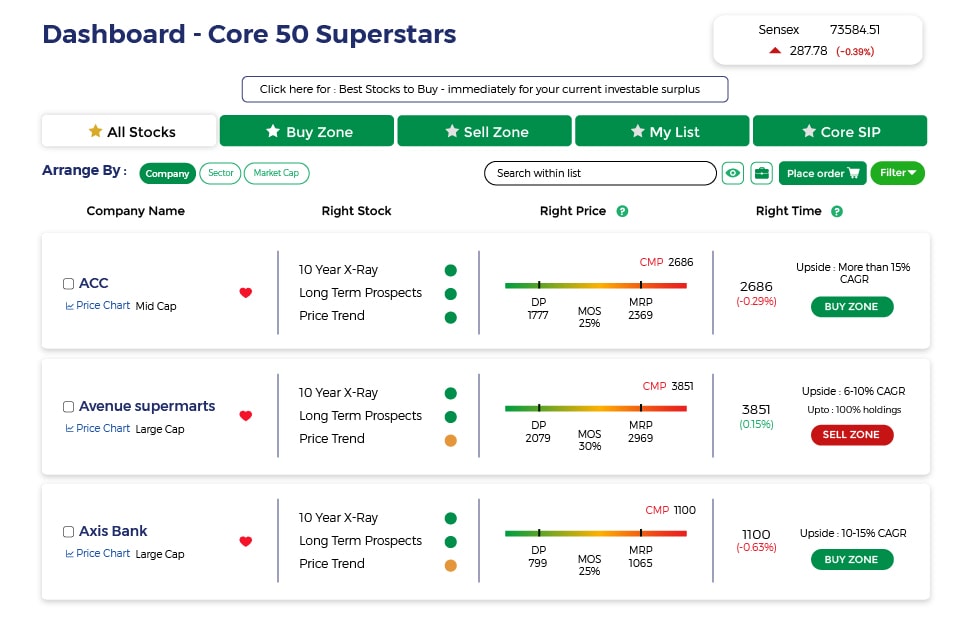What is a Model Portfolio?
It is a portfolio of stocks, with each stock in different proportion, managed by a fund manager based on his conviction/risk-reward.
Whenever an investor adds funds to a mutual fund or a PMS, a fund manager immediately align these funds similar to their model portfolio, in the same proportion. By doing this, you are investing more money in stocks that have run up i.e. forming more % of the portfolio and less money in stocks that may have become cheap as they would have become smaller % of the portfolio. As you are buying less of cheap stocks and more of expensive stocks, this is contrary to the basic investing principle of buying low and sell high.
Why we do not follow the model portfolio?
When an investor comes at different times, his opportunity sets could be very different. An investor who joins our advisory services when markets are cheap, we tend to invest his money more aggressively as risks might be low. Likewise, when markets are expensive, we invest funds more conservatively, because downside risk could be high.
Besides, the stocks available at bargain prices could be different based on when he joins our advisory service. If our stocks from yesteryear recommendations have run up, we will not purchase the same for a new investor. Why should he forcibly buy into a stock which no more has a margin of safety and just because it is part of a model portfolio? However, we wouldn’t let our old investor sell the winners in his portfolio as his purchase price is very good and has a margin of safety.
However, in mutual funds, an investor tends to indirectly buy even those securities which have run up at the time of his purchase. Some PMS do follow a strategy similar to ours. But most of PMS services and all of the mutual funds have a model portfolio that doesn’t ensure all investors earn maximum possible returns, if not the highest. (Highest returns are subject to how cheap is the market valuation when you start investing. Cheaper the better.)
As on date, our clients from 2016 have more of IT & Consumer stocks. Our 2017 customers have Pharma, IT and Corporate banks and some amount of liquid funds. Our 2018 clients have Corporate banks, Pharma and good amount of liquid Funds as they entered when markets are steeply priced.
This is just for illustration and not a recommendation.
You will notice markets were fairly valued in 2016 as they were down in Jan-Feb’16 and Nov-Dec’16 (Demonetization). Similarly, markets had run up a lot in 2017 and 2018 and hence funds entering in this time had liquid funds in their portfolios.
As far as stock picking goes, consumer stocks were bought in 2016 as they were beaten down due to demonetization. Likewise, Pharma and corporate banks were bought in 2018 as they were out of favour due to temporary issues in these sectors. But in 2018, we didn’t buy consumer or IT stocks as they had already run up.
Not following a model portfolio approach ensures an investor entering at wrong time i.e. when markets are expensive, has a chance to earn maximum possible returns, if not the highest. To earn very high returns like 18-20% CAGR is subject to when you start investing. An investor starting in 2009 or 2013 would have earned much higher returns than someone who started in other years.
Already have an account? Log in
Want complete access
to this story?
Register Now For Free!
Also get more expert insights, QVPT ratings of 3500+ stocks, Stocks
Screener and much more on Registering.








 Download APP
Download APP




















Comment Your Thoughts: